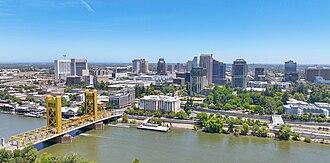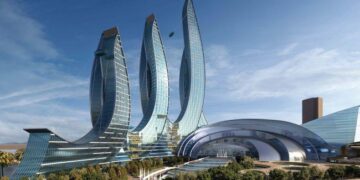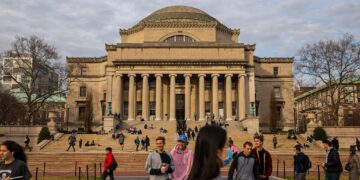Transforming Urban Environments for Active Living
As sedentary lifestyles become increasingly prevalent, urban designers worldwide are rethinking city layouts to promote more active living. Acknowledging the urgent need for healthier communities, professionals in urban planning are incorporating cutting-edge design strategies that emphasize walkability, public spaces, and eco-friendly transportation options. Insights from the World Economic Forum indicate that these transformative initiatives not only aim to boost physical health but also enhance social interactions and mental well-being. As cities adopt these forward-thinking approaches, the potential benefits for public health and urban vibrancy are significant. This article delves into how urban planners advocate for active lifestyles and what this means for future city living.
Reimagining Cityscapes to Promote Walking and Cycling
Urban designers are increasingly aware of the necessity to convert city environments into lively areas that encourage walking and cycling. By integrating natural features and focusing on pedestrian-friendly designs, municipalities can create settings where physical activity is an effortless part of everyday life. Enhancements such as wider sidewalks, delineated bike paths, and green parks not only beautify urban landscapes but also support residents’ health and wellness. Cities like Amsterdam and Copenhagen exemplify successful urban transformations that show how investing in active transportation can significantly alleviate traffic congestion while improving air quality.
A variety of innovative strategies are being employed to cultivate a culture of mobility aligned with sustainability objectives:
- Community Events: Temporarily closing streets during events encourages walking or biking.
- Taming Traffic: Introducing speed limits along with road designs prioritizing cyclists and pedestrians enhances safety.
- Sophisticated Technology: Utilizing applications and sensors to track foot traffic helps planners make informed decisions based on real-time data.
The establishment of public bike-sharing programs alongside improved links between public transport systems and cycling routes is crucial as well. A noticeable shift in commuting habits is emerging; more individuals are choosing bicycles over cars, leading to healthier lifestyles while reducing emissions in cities. Below is a summary table showcasing notable initiatives aimed at redesigning urban spaces:
| City | Initiative | Status/Impact |
|---|---|---|
| Portland | Bicycle Lane Expansion Program | Bicycle usage surged by 50% within five years. |
| Bogotá | Ciclovías Network |
Incorporating Green Infrastructure for Better Health Outcomes
The connection between green infrastructure elements—such as parks, green roofs, or permeable surfaces—and community health has gained recognition among modern-day planners. By embedding these features into their designs, cities enhance their visual appeal while creating environments conducive to promoting bothwelfare andactive living . These efforts lead not only to improved air quality but also help mitigate heat effects within cities while enhancing mental wellness—all contributing positively towards residents’ overall quality of life . Moreover , green areas act as essential venues fostering social interaction , thereby strengthening community bonds .
The following highlights some key advantages associated with integrating green infrastructure :
- < strong >Promotion Of Physical Activity :< / strong >Access To Parks And Recreational Spaces Encourages Residents To Walk , Jog Or Cycle .< / li >
- < strong >Enhanced Air Quality :< / strong >Urban Greenery Filters Pollutants Benefiting Cardiovascular Health.< / li >
- < strong >Mental Wellness Improvement :< / strong >Natural Settings Are Associated With Lower Stress And Anxiety Levels.< / li >
- < strong >Climate Resilience :< / strong >Green Infrastructure Can Alleviate Flood Risks While Improving Urban Climates Making Neighborhoods Safer.< / li >
< ul >This shift towards sustainable development underscores the growing importance placed upon implementing effective green infrastructures across various regions globally . Through collaborative planning efforts involving communities themselves , it becomes possible For Urban Areas To Prioritize Health And Wellbeing Initiatives That Foster Thriving Societies In The Future ! Below Is A Table Showcasing Leading Cities In Green Infrastructure Alongside Their Specific Initiatives:
< th Initiative >< th Impact > Pioneering policy innovations play a crucial role in advancing active transportation methods as city planners develop environments conducive toward walking , cycling & utilizing public transit effectively . These measures aim at establishing conditions under which residents can effortlessly incorporate physical activities Into Their Daily Lives ! Key Strategies Include:
- < Strong Complete Streets Policies:< Strong Comprehensive Street Designs Prioritizing Safety & Accessibility For All Users Not Just Vehicles! < Strong Incentives For Green Spaces:< Strong Mandating Parks & Recreational Areas Within Urban Developments Encouraging Outdoor Activities! < Strong Car-Free Zones:< Strong Implementing Areas Within Cities Restricting Vehicle Access Allowing More Room For Pedestrians/Cyclists!
Furthermore Local Governments Are Leveraging Data Driven Approaches Tailoring Transportation Policies Effectively Based On Usage Patterns Community Needs Allow Planners To Make Targeted Investments In Infrastructure Highlighted Innovations Include:






























